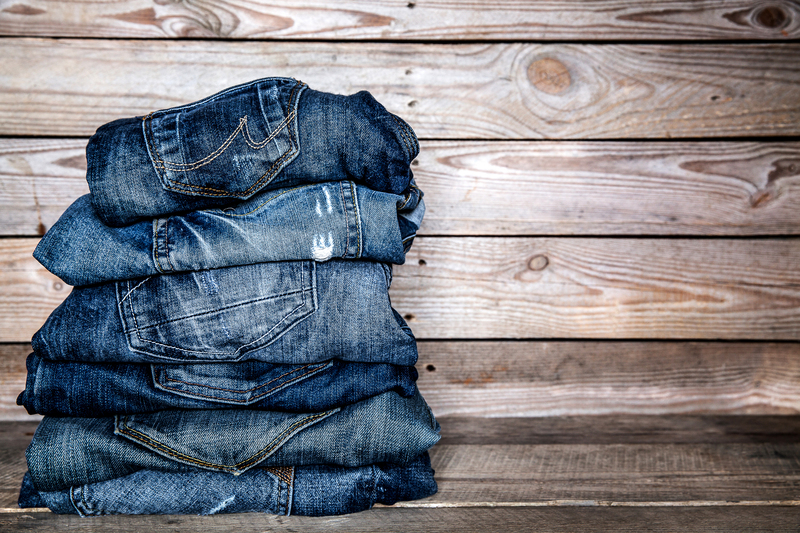Protecting the Planet Through Responsible PPE Disposal
Personal Protective Equipment (PPE) has become a pillar of modern public health, particularly in the wake of global challenges like the COVID-19 pandemic. While PPE such as masks, gloves, gowns, and face shields have saved countless lives, their widespread use has also led to a surge in waste. This waste, if not handled responsibly, poses severe environmental threats. Understanding how to dispose of PPE responsibly is crucial to safeguarding both human health and the planet. In this comprehensive article, we will explore why responsible PPE disposal matters, the environmental risks of improper handling, and actionable strategies for sustainable management.
Why is Responsible PPE Disposal So Critical?
- Environmental Protection: Improper disposal leads to pollution of land, water, and ecosystems.
- Public Health & Safety: Discarded PPE can carry pathogens, increasing risks of disease transmission.
- Wildlife Hazards: Animals can ingest, become trapped in, or harmed by discarded PPE.
- Resource Conservation: Effective disposal and recycling conserve raw materials and energy.
Responsible PPE waste management is not only a defense against environmental devastation but also an essential step towards a circular economy and a healthier planet.

The Rise of PPE Waste: An Unprecedented Environmental Challenge
In 2020 alone, it's estimated that over 129 billion face masks and 65 billion gloves were used every single month globally. With such staggering numbers, the environmental impact of PPE disposal has never been more apparent. These items are mostly made from plastics such as polypropylene, nitrile, and vinyl, which do not biodegrade easily. Improperly discarded PPE can linger in the environment for hundreds of years, slowly breaking down into harmful microplastics that seep into soil and water.
PPE in the Environment: The Issues at Hand
- Non-biodegradable Materials: Most PPE products are derived from plastics that resist breakdown.
- Microplastic Pollution: Over time, PPE breaks down into microplastics, entering the food chain.
- Waste Overflow: Massive use leads to strain on existing waste management infrastructure.
- Litter in Public Spaces: Streets, parks, and beaches have seen a rise in PPE littering, impacting aesthetics and wildlife safety.
It's clear: the surge in PPE waste demands attention. By educating individuals and institutions on proper PPE disposal methods, we can mitigate these threats.
The Environmental Impact of Irresponsible PPE Disposal
Incorrectly discarded PPE finds its way everywhere—landfills, rivers, oceans, and urban environments. The consequences include:
- Ocean Pollution: Masks and gloves floating in waterways threaten marine life through entanglement or ingestion.
- Harm to Wildlife: Animals mistake PPE for food, causing fatal blockages or poisoning.
- Soil Contamination: Chemicals in plastics leach into soil, disrupting ecosystems and agriculture.
- Spread of Disease: Used PPE can be a vector for pathogens if picked up by animals or humans.
- Exacerbation of Microplastics Crisis: Degrading PPE contributes to the growing problem of microplastics in the environment.
Each improperly disposed mask or glove is a potential hazard. Proper PPE waste disposal is a collective responsibility to preserve planetary health.
Types of PPE and Their Composition
Knowing what PPE is made from can inform how we dispose of personal protective equipment responsibly.
Common Types of PPE and Their Materials
- Face Masks: Typically made from non-woven polypropylene (plastic fibers).
- Gloves: Made from latex, nitrile, or vinyl (all synthetic materials).
- Face Shields & Goggles: Polycarbonate or polyethylene terephthalate (PET) plastics.
- Gowns & Aprons: Polypropylene or polyethylene films.
These materials are prized for their protective qualities and low cost but create disposal challenges due to their durability and resistance to decomposition.
Guidelines for Disposing PPE Responsibly
At Home
- Avoid Flushing: Never flush PPE (especially masks and gloves) down the toilet. They can create blockages and harm water treatment systems.
- Bag Before Disposal: Double-bag used PPE, particularly if contaminated, to reduce the risk of infection spread.
- Use Designated Bins: Dispose of bagged PPE in general waste bins, not recycling bins (unless part of a specialized recycling scheme).
- Wash Hands: After discarding PPE, always wash hands thoroughly to prevent any chance of contamination.
In Workplaces, Healthcare, and Public Spaces
- Use Marked Containers: Provide clearly labeled bins for PPE waste, separate from general waste and recyclables.
- Closed-Top Bins: Closed or pedal-operated bins reduce the risk of direct contact with contaminated PPE.
- Regular Collection: Ensure PPE waste is collected and removed regularly to prevent overflow and contamination.
- Follow Local Regulations: Abide by hazardous waste guidelines for healthcare settings or other high-risk environments.
Community and Government Initiatives
- Public Awareness: Launch campaigns informing residents about proper PPE waste disposal practices.
- Guidelines Distribution: Provide clear, accessible disposal instructions in public places and workplaces.
- Support for Recycling Programs: Encourage and invest in PPE recycling programs where possible.
Innovative Solutions & Technologies for PPE Waste Management
Technological advancements and creative approaches are emerging to address the growing issue of PPE waste. Industries, governments, and researchers are investing in methods to reduce, recycle, or repurpose used PPE. Some promising practices include:
PPE Recycling Programs
- Specialist Recycling Firms: Companies are developing systems that collect, sanitize, and recycle single-use PPE into plastic pellets for manufacturing.
- Hospital Collaboration: Healthcare institutions partner with recycling organizations to divert large volumes of used PPE from landfills.
- Community Collection Points: Local authorities install special bins for mask and glove collection, enabling safe recycling.
Biodegradable and Compostable PPE
- New Materials: Scientists are creating masks and gloves from materials that biodegrade quickly under the right conditions, minimizing long-term pollution.
- Composting Programs: Certain products are now designed to be composted in industrial composting facilities, returning nutrients to the soil.
Reusable PPE Solutions
- Washable Masks and Gowns: Durable PPE open to multiple uses reduce single-use waste, saving costs and resources.
- Decontamination Technologies: UV and heat-based decontamination allow safe reuse of some types of PPE in healthcare or industrial settings.
While these innovations are promising, adoption and scaling remain essential. Every individual and institution has a role to play in supporting eco-friendly PPE disposal efforts.
The Role of Governments and Policy in PPE Waste Reduction
Effective regulatory frameworks and policy guidelines are necessary to promote sustainable PPE management.
Policy Recommendations for Responsible PPE Disposal
- Mandatory Segregation: Laws requiring separation of PPE from recyclable and compostable waste streams.
- Producer Responsibility: Holding manufacturers accountable for end-of-life management of their products.
- Investment in Research: Funding for research into recyclable or biodegradable PPE materials.
- Public Procurement Standards: Ensuring public institutions purchase sustainable PPE whenever available.
- Punitive Measures: Fines and penalties for mass littering or unlawful disposal of PPE waste.

How Individuals Can Protect the Planet Through Responsible PPE Disposal
Every action counts. Whether you're a healthcare worker, a student, or a concerned citizen, you can support the planet by:
- Choosing Reusable PPE: When safe and practical, opt for washable masks and face shields.
- Reducing Consumption: Avoid unnecessary single-use PPE by following local health guidelines on when it's truly needed.
- Proper Waste Disposal: Always dispose of used PPE in designated bins and avoid mixing with recyclables or organics.
- Supporting Initiatives: Participate in or support local PPE recycling programs and community cleanups.
- Educating Others: Share information on responsible PPE waste disposal with your network.
Towards a Cleaner Future: The Importance of Responsible PPE Disposal
Personal protective equipment has become an everyday necessity. As its use continues, so does our responsibility to dispose of it wisely. Choosing to responsibly manage PPE waste is an act of environmental stewardship that safeguards people, wildlife, and the ecosystems upon which we all depend.
By following simple guidelines, supporting innovative solutions, and advocating for effective policies, we can collectively reduce the impact PPE waste has on our environment. Protecting the planet through responsible PPE disposal is not just a necessity—it's a commitment to a sustainable, healthy future for generations to come.
Take Action Today
Remember: The next time you toss out a mask or glove, think about its journey. Make the responsible choice and help protect the planet through proper PPE disposal.



